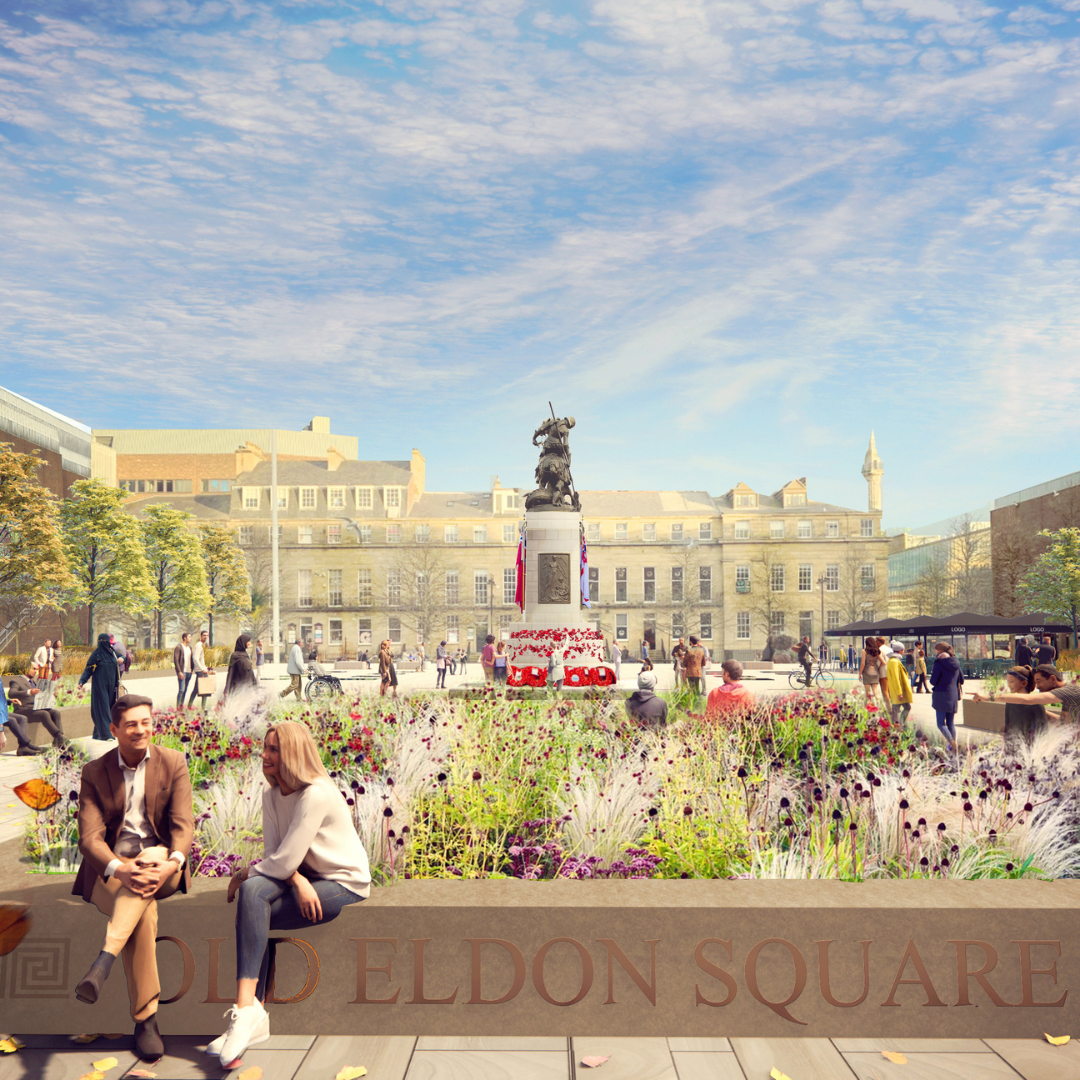Project showcase
Newcastle City Centre, Newcastle upon Tyne – Newcastle City Council with LDA Design

This £50million investment in the public realm of 13 streets and spaces around the city’s retail heart aims to make the centre healthier, greener, safer and more inclusive, ensuring Newcastle remains a place where people want to visit, shop, cycle or live.
Where is the project located?
Newcastle City CentreNewcastle Upon Tyne
Northumberland NE1 6AG
Who is the developer/client of the project?
Newcastle City Council
Who is on the project team? (designer, consultants, etc)
Lead Designer, Landscape Architecture, Urban Design & Principal Designer: LDA DesignPartners: Pell Frischman, Desco, United Creatives, Michael Grubb Studios, Leslie Jones Architects and Rob Bevan
Describe the context of this project, its neighbourhood and people?
The Newcastle City Centre Transformation Plan (CCTP) will bring ambitious, people and nature focussed change to the streets and spaces of this great city. A £50million investment aims to make the centre healthier, greener, safer and more inclusive, ensuring Newcastle remains a place where people want to visit, shop, cycle or move to, where businesses can thrive and where there’s lots on offer for families.
Newcastle, like other UK cities, is facing challenges from climate breakdown and also the pandemic, which has laid bare inequalities and frailty in the high street. CCTP aims to bring people and energy back to the city, building critical economic and environmental resilience. The project aims to be a catalyst for new development, including residential.
The vision is for a distinctive, world-class public realm which properly serves Newcastle, making it a more liveable city, and reinforcing civic pride by providing a fitting setting for the city’s architecture, landmarks and art. It will make the city centre a more attractive place to spend time, bringing nature in and improving connectivity by re-connecting fragmented parts of the city. CCTP will transform 13 streets and spaces around the city’s retail heart. Improvements include removing cars from Blackett Street and the greening of Grey Street, one of England’s finest Georgian streets.
Newcastle is a city built by and for its people, known for its welcome and shaped by industry and innovation. This history and culture, combined the landscape, have inspired every aspect of our design.
Please describe your approach to this future place and its mix of uses. How will it function as a vibrant place? How does it knit into, and serve the needs of, the wider area?
The health of our towns and cities has been judged by retail performance for too long. CCTP will help Newcastle break free of this reliance to become an experiential, family-orientated place, enabled and enlivened by a public realm designed to also help the city realise its 2030 carbon neutral ambitions. The plan proposes bold changes to Newcastle’s iconic and busiest streets, unlocking them from traffic, reconnecting a disjointed city centre and creating a lively day and night dynamic. It lights the touch paper for a pedestrian and landscape revolution.
Northumberland Street is a retail highway, and here LDA has challenged the idea of a traditional high street to create a greener, more relaxed and sociable place. A central ‘slow line’ will offer shelter and seating. Striking lighting columns influenced by the Pilgrim’s Way to Holy Island add interest.
Grey Street is a beautifully preserved Georgian street currently dominated by cars. It connects the city to the Tyne – linking the city with the industry and drama of the river. Our vision will create a linear landscape, transforming the pedestrian experience. The long-term plan is to remove vehicle traffic from Grey Street, making it the hub for the city’s café culture.
The changes will draw people to less-visited streets, such as Vine Lane, Ridley Place and Saville Row, with pop-up food stalls and a flower market in Ridley Place. Saville Row will transform into a city garden. Design motifs are inspired by wood engraver, Thomas Bewick, whose statue overlooks the street.
What is the environmental impact of the project? How will the carbon use and material impact of the development be mitigated? What is the sustainability strategy?
Our work is at the centre Newcastle’s response to the climate emergency, and the brief for the project was set within the context of Newcastle City Council’s 2030 Action Plan for Net Zero. Newcastle is a compact city, but hostile roads dissect its centre creating a fragmented and uninviting experience. This scheme will remove vehicles from many of its streets, improving air quality, increasing opportunities to let nature in and creating a safer cycle network which builds on lessons from temporary measures put in place during Covid-19.As well as the wider impact of reduced vehicular movement, we have focussed our design around creating a greener city centre. We are doubling the number of trees, as well as creating biodiverse rain gardens to attenuate water. Blackett Street will become a linear park, a green lung running through the city centre. Northumberland Street’s ‘Slow Line’ will be a verdant corridor of street trees, delivering a natural high street for all, and the highway along Grey Street will be transformed into a green corridor.
Central to our sustainability strategy has been the careful selection and setting out of our proposed paving. We fully assessed the ethical, environmental, and social impact of the stone, and the quarries they were being sourced from. Where possible there is zero cutting of stone on site, minimising waste. Finally, we have assisted the Council in the recycling and re-use of stone in other regeneration projects across the city.
Describe the social impact of the project: How will this future place contribute to the economic, environmental and social wellbeing of its citizens?
The project’s aim is to make Newcastle city centre is a more inclusive place, with a network of streets and spaces that inspire confidence and pride. It positions public realm at the heart of growth and gives residents and visitors more of what they want today – quality spaces to meet and socialise; greater diversity in the city’s cultural offer; safer, clearer streets and where people can walk freely, and lots of family things to do. The public realm will showcase the best of the city’s talent, with Old Eldon Square becoming a destination and a reenergised focus for city celebrations. Detailed planting schemes will ensure there is interest throughout the seasons.
We have worked closely with the public to arrive at our design proposals, taking valuable lessons from events and trial road closures. Prior to, and during, our design work there has been a mix of weekend and summer closures of Blackett Street – a busy bus corridor which cuts through the city centre. The outcomes of these closures have been invaluable in helping us and the community to understand the possibilities.
We have selected materials to ensure the maximum environmental value and reviewed the ethical and social impact of our choices. This analysis, for example, led to us sourcing stone from a quarry in Scotland, reducing journey time and supporting the wider UK economy. We are using local craftspeople to manufacture bespoke street furniture and the iconic lighting structures that will become a new feature on Northumberland Street.
Festival of Pineapples
24-26 February 2026
Pineapples prize giving night
April
Pineapples at Festival of Place
10 June 2026
© The Pineapples - Tweak Ltd. 124 City Road, London, EC1V 2NX. Tel: 020 3326 7238



